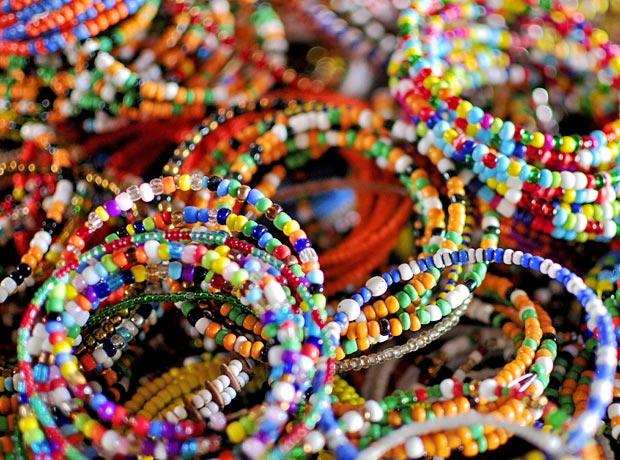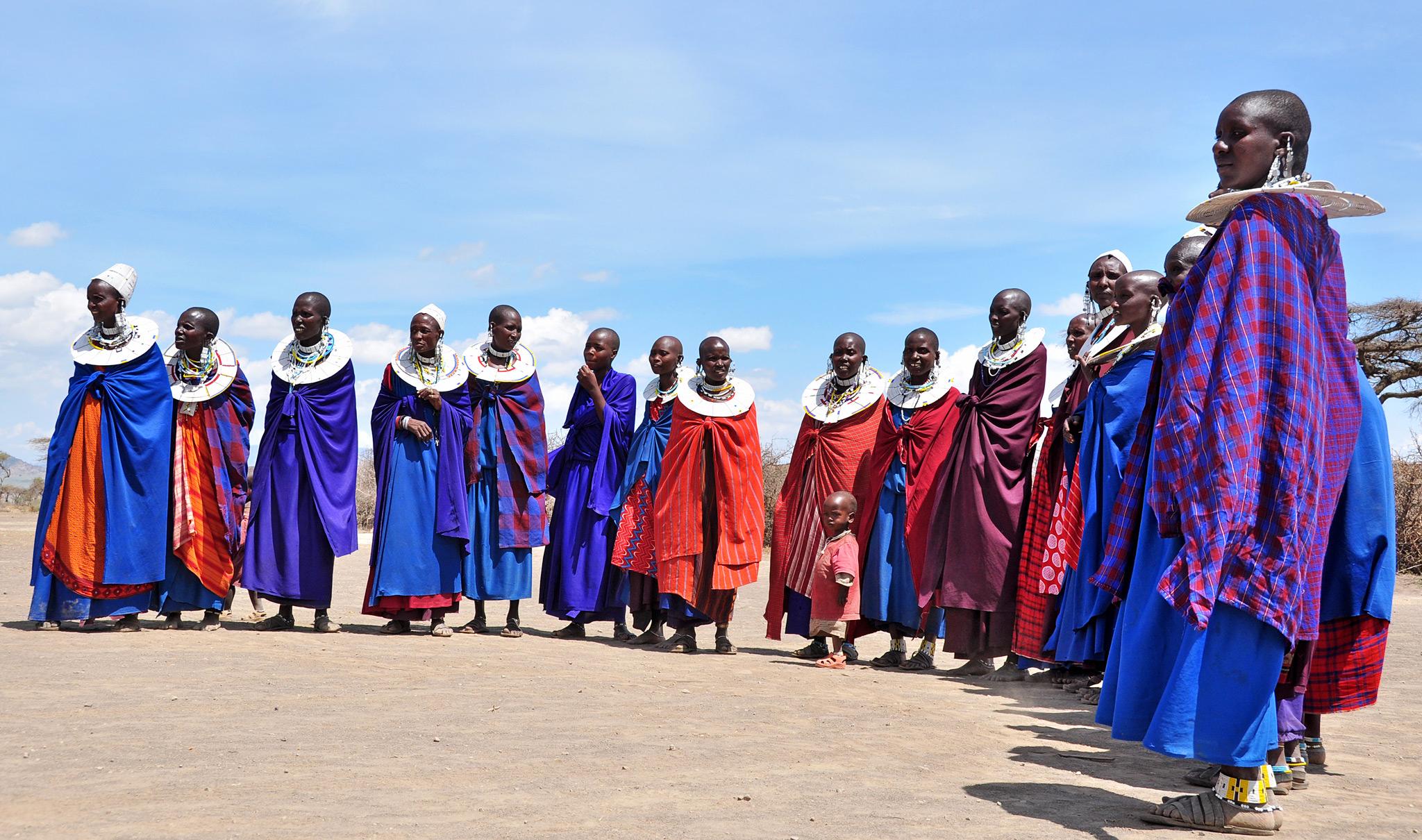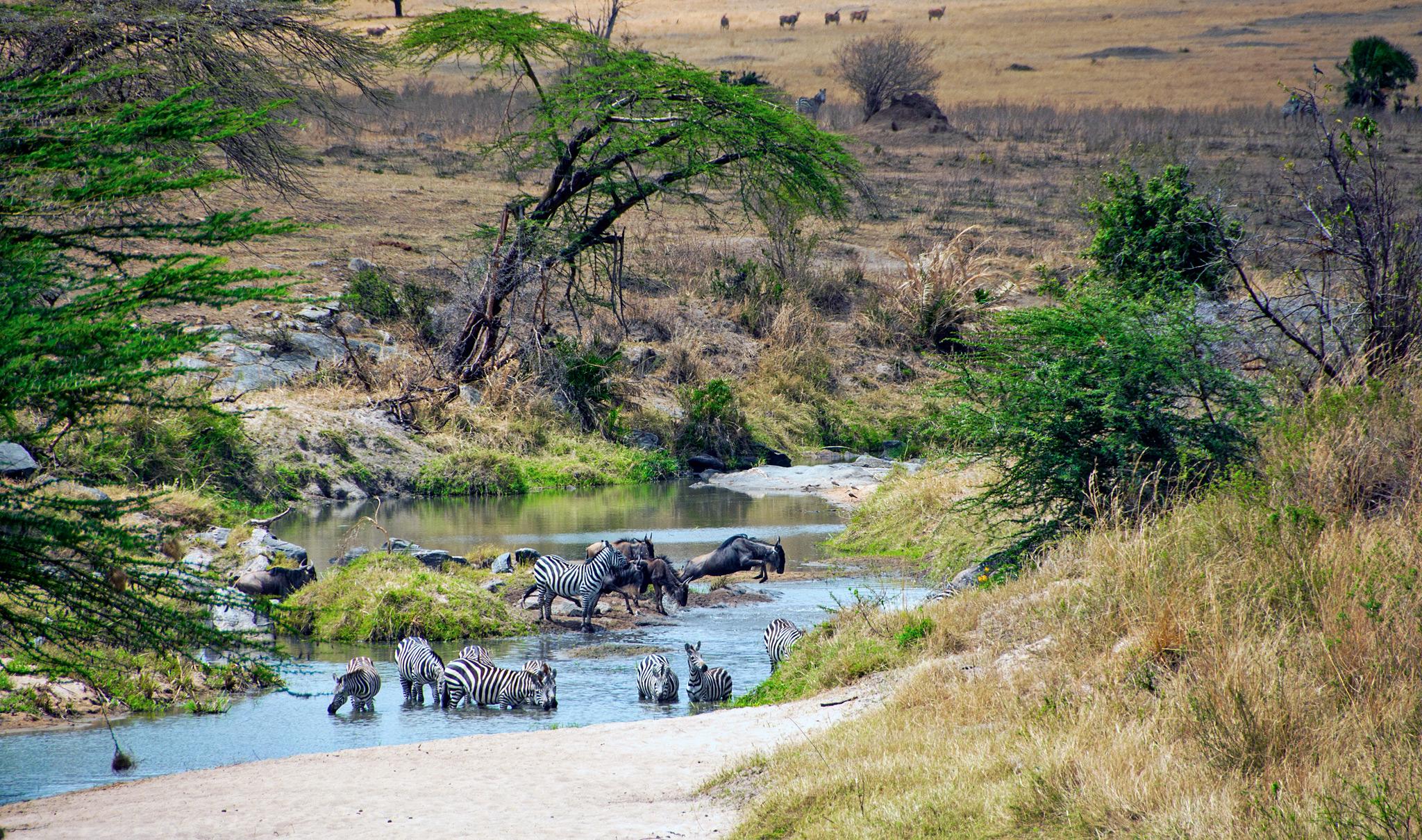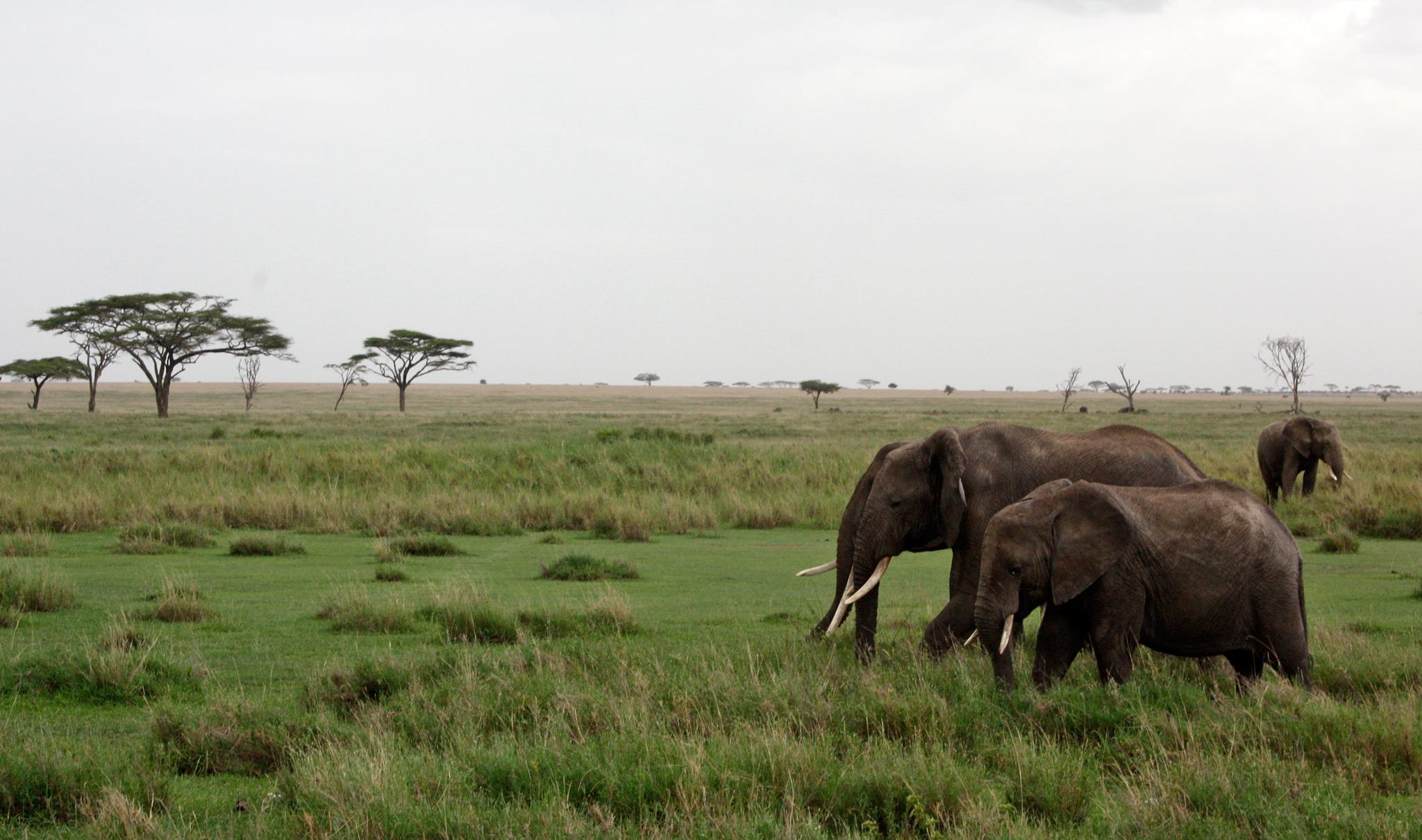For visitors travelling through northern Tanzania, it is common to see beaded products in souvenir shops, on the streets or at hotels. Whether it is arm bands, coasters, lamp shades, necklaces, Christmas ornaments or earrings, the designs are endless and comes in any colour, shape or size.
But who creates these colourful products?
The Maasai is probably the most famous ‘beading’ tribe in East Africa and making beaded products plays a huge roll in their daily lives. Only the women do the beadwork and they take this skill very seriously, always making time to meet up to make new jewellery. Before glass and plastic beads were available traditional jewellery was made from what the women could find in the bush like seeds, sticks, shells and dry grasses. Glass beads were introduced by traders in the early 1900’s and these were traded for everything from ivory, skins to semi-precious stones. Today glass beads have been replaced by cheaper plastic beads which come in all colours, shapes and sizes.

The beaded jewellery the Maasai wears incorporates the whole of their culture; it represents strength, tradition, beauty, marriage, warrior hood, marital status and their deep devotion to their cattle. Both Maasai men and women wear the beaded jewellery and every piece has a meaning. Each member of the Maasai community belongs to a certain age group and wear jewellery that represents this. This makes it easier to distinguish between age and social status.
When Maasai women gets married a special wedding collar is made. These collars depict a lot of information, like which boma she comes from and how many houses her boma has. The collar also has several beaded strands hanging from it, each strand signifies the dowry that the bride has received. Usually the dowry is made up of cows. So if a wedding collar has 15 strands then the bride has received 15 cows. Although these wedding collars are only worn on wedding days, another simpler collar is worn on a more regular basis. When the women dance, they wear such collars as decoration. Married women also wear a long neckless with blue beads.

Colour plays a vital role in the handcrafting of the jewellery as each colour has a symbolic meaning. This is often associated with their cows.
Red represents blood, bravery, strength and unity.
Orange shows warmth, hospitality, generosity and friendship.
Yellow symbolises growth and fertility and Blue portrays energy and the sky.
Green stands for production and nourishment while white indicates health and purity.
Black means unity, solidarity and harmony.
Today these artistic Maasai beaded items are available everywhere. A lot of projects have been set up where groups of Maasai women design, manufacture and sell these souvenirs to visitors to make a living.





